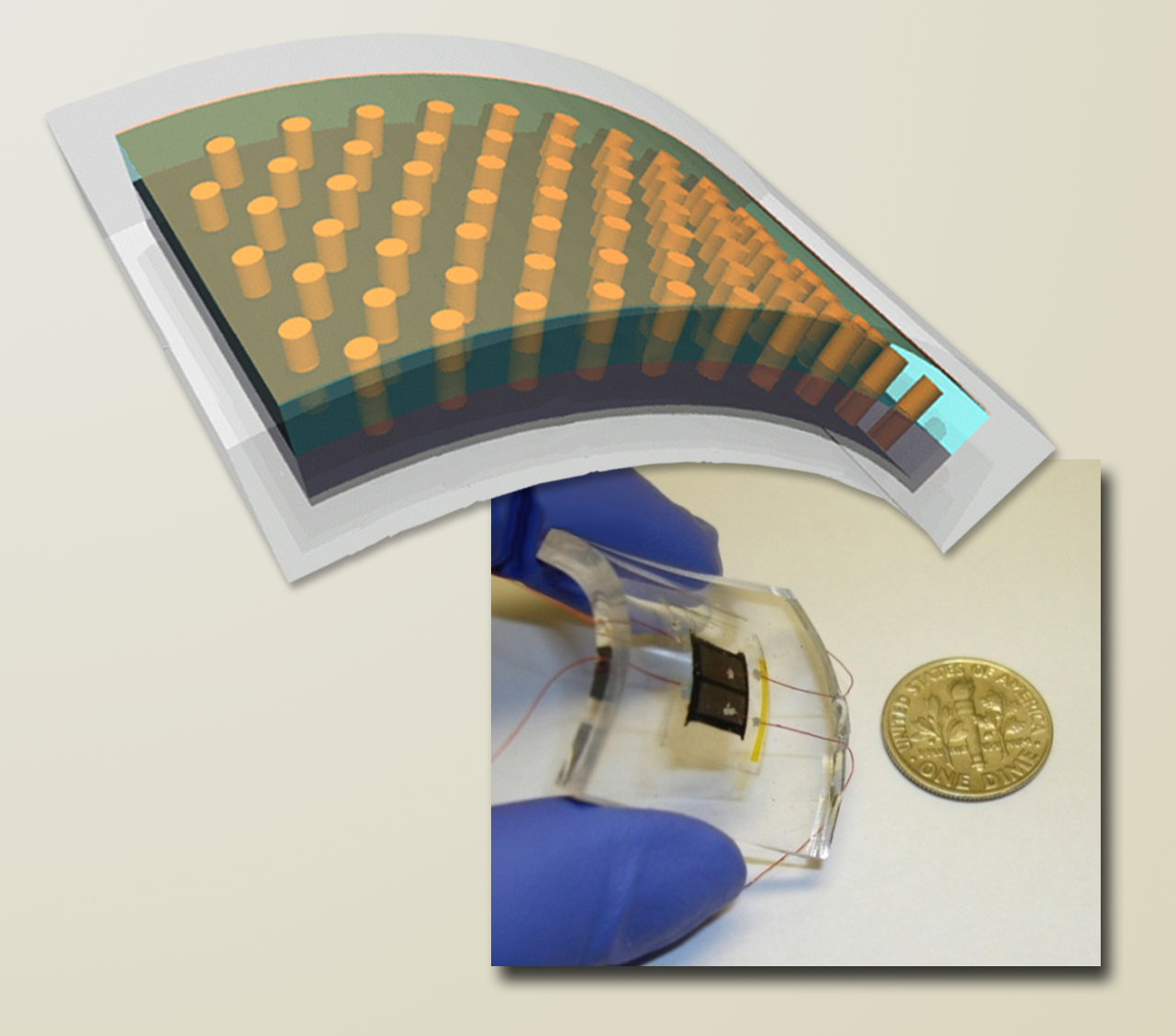3D solar cells will be cheap and flexible
Nanotech pillars let new PV cells gather more light

Everything's going 3D these days - even solar cells.
Researchers at the US Department of Energy and the University of California in Berkeley have found a new way to make efficient three-dimensional solar cells from low-cost and flexible materials.
The new design grows optically active semiconductors in nanoscale pillars, just billionths of a metre tall.
More room for more light
Unlike a typical two-dimensional solar cell, a nanopillar array offers much more surface for collecting light. Computer simulations have indicated that, compared to flat surfaces, nanopillar semiconductor arrays should be more sensitive to light and more efficient at converting it into electricity.
"Unfortunately, early attempts to make photovoltaic cells based on pillar-shaped semiconductors yielded disappointing results. Light-to-electricity efficiencies were less than two per cent," says Berkeley professor Ali Javey.
Javey's new method, called the 'vapor-liquid-solid' process, makes large-scale modules of dense, highly ordered arrays of single-crystal nanopillars, which already have an efficiency of six percent.
Get daily insight, inspiration and deals in your inbox
Sign up for breaking news, reviews, opinion, top tech deals, and more.
Still not as good as conventional PV
While this is less than the 10 to 18 per cent range of mass-produced commercial cells, it is higher than most photovoltaic devices based on nanostructured materials - and should improve with more research.
In addition, the new nanopillars can easily be incorporated into flexible materials to make bendable solar cells.
"There are lots of ways to improve 3D nanopillar photovoltaics for higher performance, and ways to simplify the fabrication process as well, but the method is already hugely promising as a way to lower the cost of efficient solar cells," says Javey.